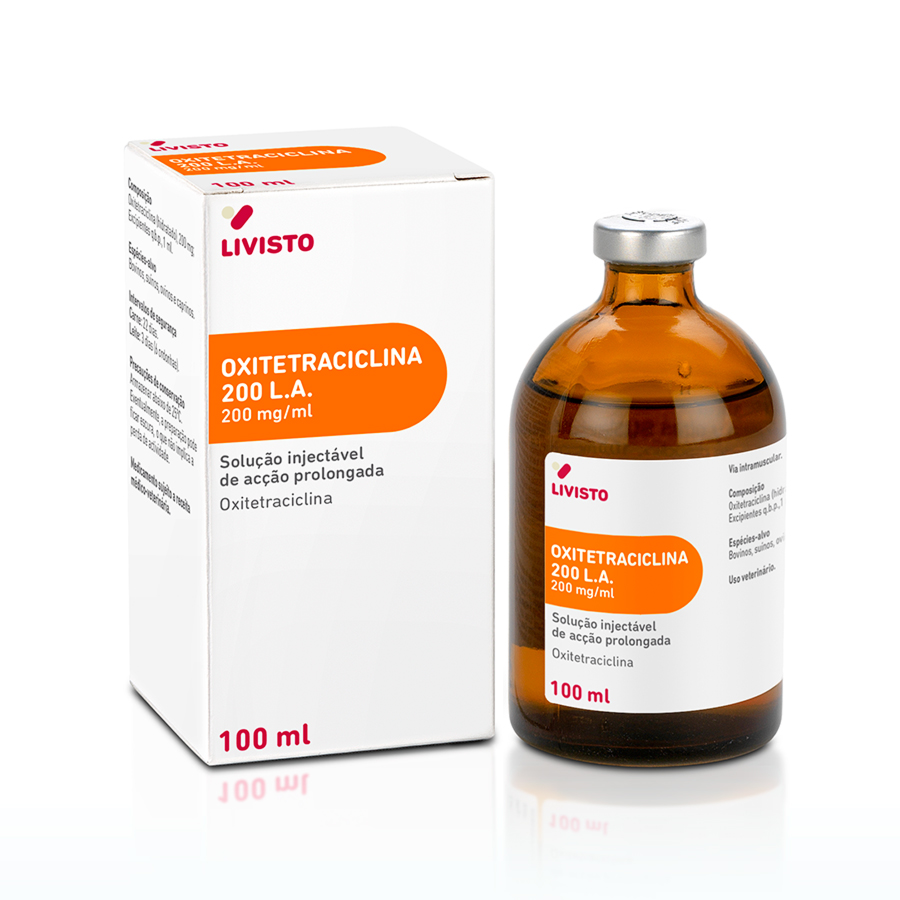

OXITETRACICLINA 200 L.A.
Long-acting solution for injection Composition 1 ml contains: Oxytetracycline, 200 mg. Indications Cattle: Shipping fever, enteritis and gastroenteritis, infectious pneumonia, metritis and mastitis.
Pigs: Bronchopulmonary infections, infectious enteritis and gastroenteritis, metritis, pasteurellosis, arthritis and MMA syndrome. Sheep and goats: Respiratory infections, enteritis, infectious abortion, pyelonephritis and brucellosis.
Contraindications Do not use in animals with renal impairment or during the first months of life. Adverse reactions The high concentration of active ingredient and the long-acting effect may produce a slight transitory swelling at the injection site that spontaneously disappears. Likewise, in cattle allergic reactions may be developed that are manifested with oedema at the site of injection and that spontaneously disappears. If you notice any serious effects or other effects not mentioned in this package leaflet, please inform your veterinary surgeon.
Target species Cattle, pigs, sheep and goats. Dosage for each species, route and method of administration Intramuscular use. Inject 1 ml per 10 kg of body weight in a single dose. In severe cases, injection may be repeated in 72 hours. If doses are higher than 20 ml in cattle, 10 ml in pigs and 5 ml in sheep and goats, it is recommended to divide dose into two injection sites.
Withdrawal period Meat: 22 days. Milk: 3 days (6 milkings). Storage precautions Keep out of the sight and reach of children. Protect from moisture, light and heat, at a temperature below 25 °C. Eventually, the preparation may get dark, which does not imply loss of activity. Special warnings Special precautions for use in animals: Oxytetracycline is deposited in bone and interferes with bone growth when given to young animals; it is advisable to avoid administration of oxytetracycline during the Page 2 of 2
OXITETRACICLINA 200 L.A. Data sheet livisto.com first postnatal months. Interactions: None known. Overdose: Overdosage is unlikely due to the fixed dosage. Hepatotoxicity may result by administration of frequent and large doses; in these cases, treatment should be discontinued and hepatic protectants should be administered.
Disposal Medicines should not be disposed of via wastewater or household waste. Ask your veterinary surgeon how to dispose of medicines no longer required. These measures should help to protect the environment. Other information Vials of 10 ml, 50 ml, 100 ml and 250 ml. Not all pack sizes may be marketed. For animal treatment only. To be supplied only on veterinary prescription. Invesa Industrial Veterinaria, S.A. a LIVISTO company Esmeralda, 19 08950 Esplugues de Llobregat (Barcelona) Spai